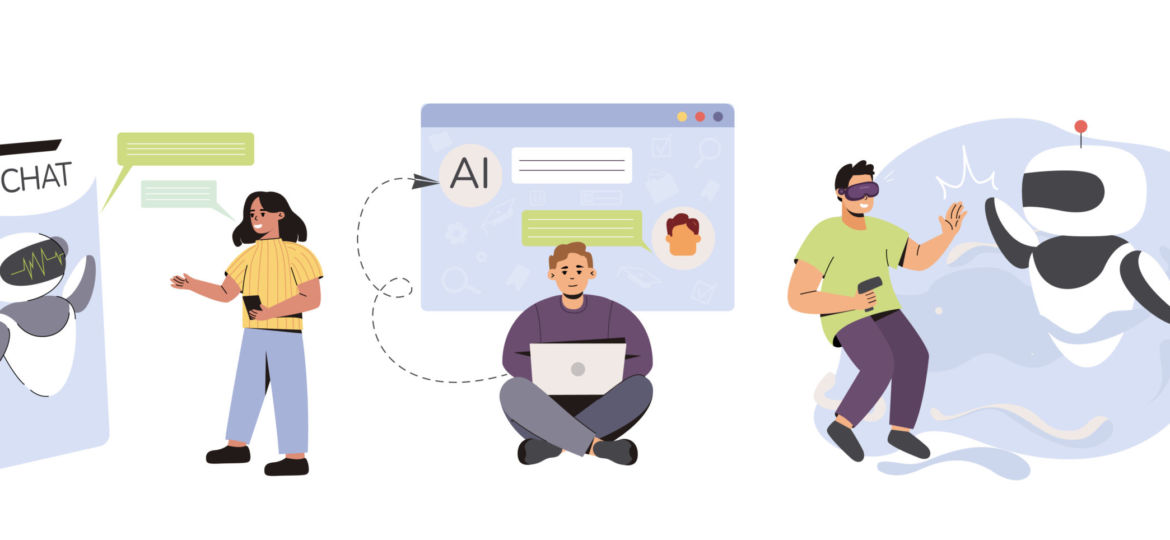
Generative AI and Intellectual Property Rights in the EU context
As generative artificial intelligence (GenAI) becomes integral to various industries, understanding its mechanics and associated intellectual property (IP) implications is essential for businesses. This article explores GenAI applications from an intellectual property perspective, highlighting key considerations for EU businesses involved in contracting or providing AI services.
How Generative AI Works
Imagine a design business aiming to produce innovative and original digital graphics for use in advertising, fashion, and interior decor. To streamline their design process and enhance creativity, they implement a GenAI system designed to generate unique patterns and images.
The process begins by assembling a substantial dataset of images, patterns, or artworks, serving as the training material for the GenAI system. Utilising techniques such as deep learning, the GenAI learns the characteristics of these designs, including style, colour, and form. After training, the system can generate new designs based on criteria or prompts specified by the user, producing outputs that reflect aesthetics learned from the training data.
Associated Legal Issues
- Training data and intellectual property rights. GenAI systems are trained using datasets that may include copyrighted materials, personal data, and proprietary information. If the training data includes copyrighted materials not properly licensed, there is a risk that GenAI’s outputs could inadvertently replicate these protected elements, leading to copyright infringement claims.
- GenAI outputs. Here, the risks primarily revolve around intellectual property ownership and the potential for generating inappropriate or illegal content.
- Intellectual property ownership. Current EU copyright laws are based on human authorship, posing a dilemma when content is autonomously generated by AI with minimal human intervention. The primary concern is determining the ownership of copyright for AI-generated content.
- Defamatory, biased, and harmful outputs. Although not directly related to intellectual property rights, there’s a risk that GenAI outputs could contain defamatory content, perpetuate biases, or generate content that is socially harmful or illegal.
- Contractual and licensing challenges. The diversity in contractual terms for AI tools poses another challenge. Such terms can vary greatly in their provisions related to the ownership of AI-generated outputs, usage rights, and obligations on confidentiality and data security.
Regulatory Developments
In addition to the existing EU legal framework, the new AI Act brings two major regulatory shifts that will affect businesses providing GenAI models in the European Union:
- Training data transparency. Providers of GenAI models are required to be transparent about their training data. This obligation extends beyond merely disclosing the use of copyrighted materials to providing general information about the datasets and databases employed.
- GenAI and copyright law. The Act requires GenAI providers to implement policies ensuring compliance with existing EU copyright laws throughout the entire AI lifecycle, from data input to model output.
Recommendations for Contractual Strategies
To mitigate the risks associated with GenAI, businesses may consider the following contractual strategies:
- Training data. Given the transparency obligations, contracts must stipulate provisions regarding the use of training data, including any restrictions or obligations related to copyrighted data.
- Ownership of GenAI outputs. Contracts should explicitly address the ownership of IP rights concerning AI-generated content.
- Indemnification clauses. To address potential IP infringements, businesses should consider indemnification clauses that protect against claims arising from the use of AI tools and the outputs they generate.
- Use restrictions and liabilities. Contracts should define the boundaries of how the GenAI application and AI-generated outputs can be used by users, including restrictions to prevent unauthorised use.
By implementing appropriate contractual strategies, businesses can leverage the advantages of GenAI whilst minimising legal risks. Our team is ready to help you develop the strategies and contracts needed to benefit from evolving technologies. Book a complimentary 20-minute call to discover how we can assist your business in maximising the potential of generative AI whilst protecting your business.
Image by vectorjuice on Freepik
Read other articles written by Anna Levitina



